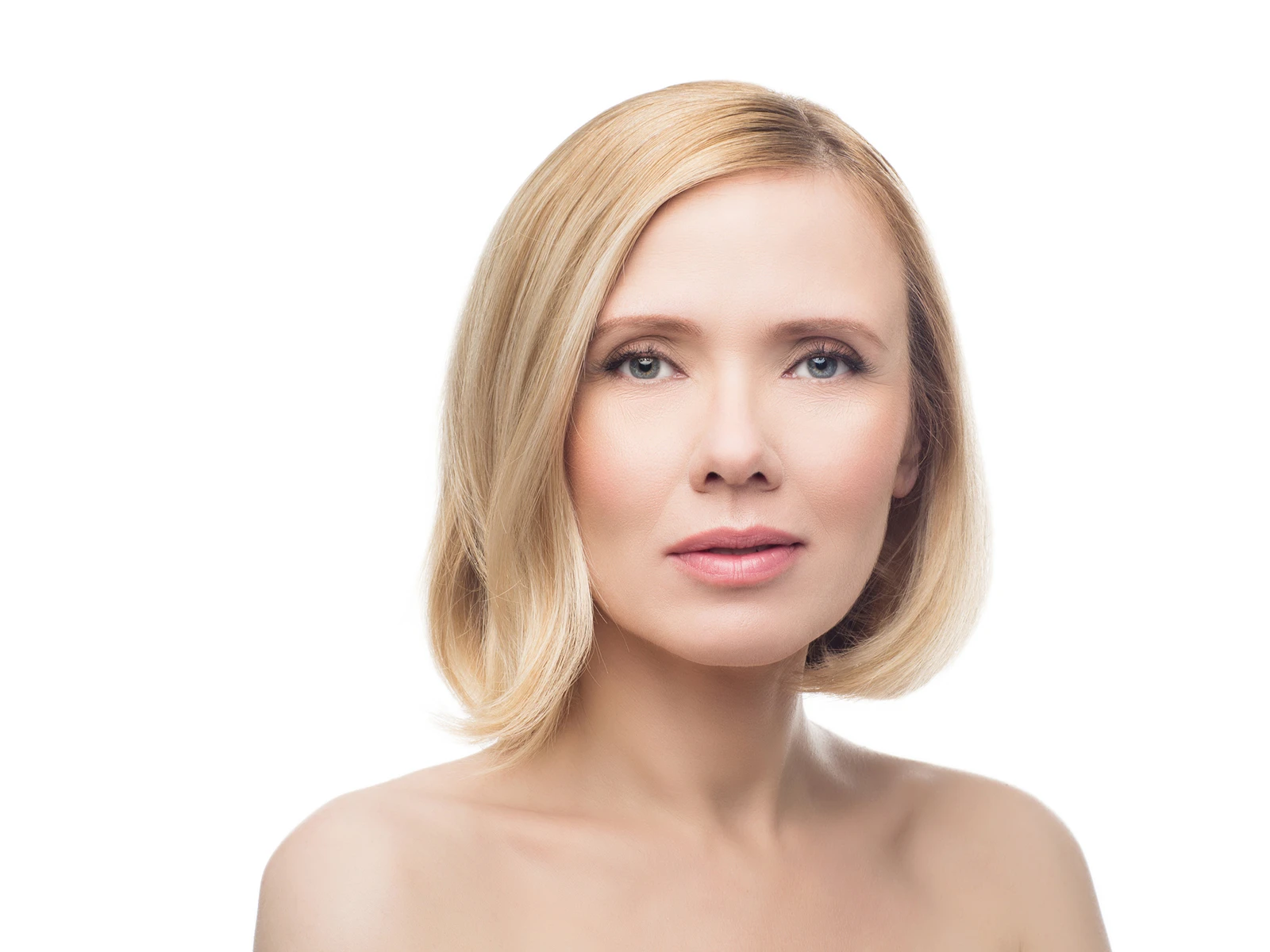More about facelifting
What is facelifting?
How does a facelift work?
What criteria must be met in order to qualify as a patient for a facelift?
What advantages does a facelift have?
What complications can occur during a facelift?
Facelifting (Rhytidectomy) refers to an invasive procedure in plastic and cosmetic surgery aimed at straightening the skin and the underlying tissue, thereby permanently removing existing wrinkles. The facial tautening can be done by different methods, which differ in the type of incision and the type of preparation. If only lighter signs of aging are present, a mini-facelift can be done, which requires less effort.
Depending on the extent of the aging process, a facelift can be performed using various cutting techniques and methods.
The following surgical procedures are conceivable:
Conventional facelift
The incision begins at the hairline of the temples and extends behind the ear into the hairy area of the scalp. Fatty tissue can be shaped and redistributed in the face, cheeks and neck. The underlying tissue is repositioned, often deep tissue layers are tightened. After that, the excess skin is removed.
SMAS-Lift (Superficial Musculo Aponeurotic System-Lift)
Here, skin, superficial connective tissue layer (SMAS) and the underlying layers are detached from each other. The SMAS tissue is tightened and anchored again. Although this streamlining of the deeper connective tissue is a more complex process, it can be used to achieve very natural, lasting results. However, the method is not suitable for every type.
Mini-Lift, MACS-Lift (Minimal Access Cranial Suspension-Lift)
With the mini-lift, shorter incisions are made if the age changes are not significant. It is often possible to do without a tightening of deeper tissue layers, which results in a shorter scar. In a mini-lift, additional threads are inserted through a minimal incision, the face and neck tighten. Whether the MACS-Lift or Mini-Lift comes into question is determined in a personal interview after a careful examination.
Neck lift
Hanging jowls, loose skin on the neck and fat deposits under the chin can be corrected with a neck lift. The incision starts at the earlobe and extends behind the ear to the lower scalp. For corrections in the neck area, a second incision may need to be made under the chin.
Additional measures
In many cases, the methods described above are complemented by measures such as augmentation of the neck and cheeks, the re-transplantation of the fat gained in the zygomatic region (volume improvement) or surgical measures such as brow or forehead lift.
After Lifting
After the operation, you’ll need patience as the puffiness must recede. After a facelift, a bandage is worn around the head for a few days. During this time, excessive movements, especially of the facial muscles, should be avoided at all costs and the head should be elevated as high as possible. After approx. 10 days, the stitches are removed and after 3 weeks at the latest the swellings should have subsided to the extent that one can actively participate in social life again. Avoid wearing garments that must be pulled over your head. Lymph drainage is recommended as aftercare.
A facelift is especially suitable for people who want to give their face a younger and fresher look. However, it should be remembered that a good facelift does not create a completely wrinkle-free face, but only causes a clear rejuvenating effect. Those who only want to remove individual wrinkles, have better options available.
Not every patient is suitable for a facelift. Some patients who have certain pre-existing conditions as well as health problems or refuse to undergo a lengthy surgical procedure will not be able to have a facelift performed. These exclusion criteria should be carefully examined and discussed in advance.
It cannot be pinpointed, which age is ideal for a facelift. The signs of aging are different in every person. For this reason, it must be individually decided on the basis of the extent of skin aging.
The key benefit of a facelift over other methods of wrinkle treatment is its durability. A well-performed facelift makes the face appear much younger. In addition, the face looks naturally rejuvenated after a professional facelift. The facial expressions are preserved and the face does not appear mask-like. In this way, the face receives freshness and youthfulness without appearing to have been operated on.
A facelift is a great way to treat wrinkles for people who care about their appearance or for professional reasons. It gives the face new vitality and gives the patient more self-confidence and satisfaction with their own face. In addition, the neck is partially tightened in the course of a facelift, which contributes to a further optical rejuvenation.
As with any surgery, facelifting can lead to infections and bleeding, but with the right treatment, this will not be a problem.
Emotional disturbances or a feeling of tightness in the area of the incisions occur relatively frequently and diminish after a short time.
On the other hand, more serious complications of a facelift are circulatory disorders, nerve disorders and facial paralysis, which can occur if the facial nerve is severed or irritated. In particular, circulatory disorders represent a significantly increased risk in smokers.




